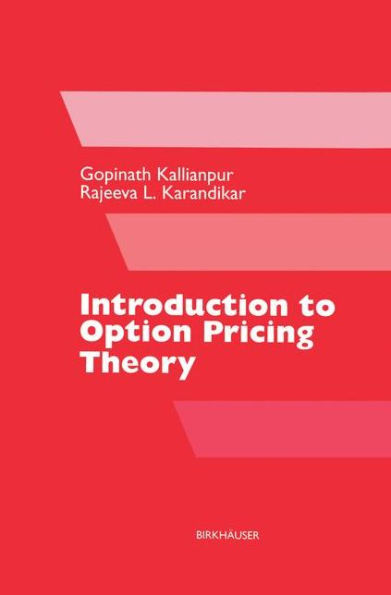5
1
9780817641085


Introduction to Option Pricing Theory / Edition 1 available in Hardcover

Introduction to Option Pricing Theory / Edition 1
- ISBN-10:
- 0817641084
- ISBN-13:
- 9780817641085
- Pub. Date:
- 10/22/1999
- Publisher:
- Birkhäuser Boston
- ISBN-10:
- 0817641084
- ISBN-13:
- 9780817641085
- Pub. Date:
- 10/22/1999
- Publisher:
- Birkhäuser Boston
109.99
In Stock

Product Details
| ISBN-13: | 9780817641085 |
|---|---|
| Publisher: | Birkhäuser Boston |
| Publication date: | 10/22/1999 |
| Edition description: | 2000 |
| Pages: | 269 |
| Product dimensions: | 6.10(w) x 9.25(h) x 0.03(d) |
From the B&N Reads Blog
